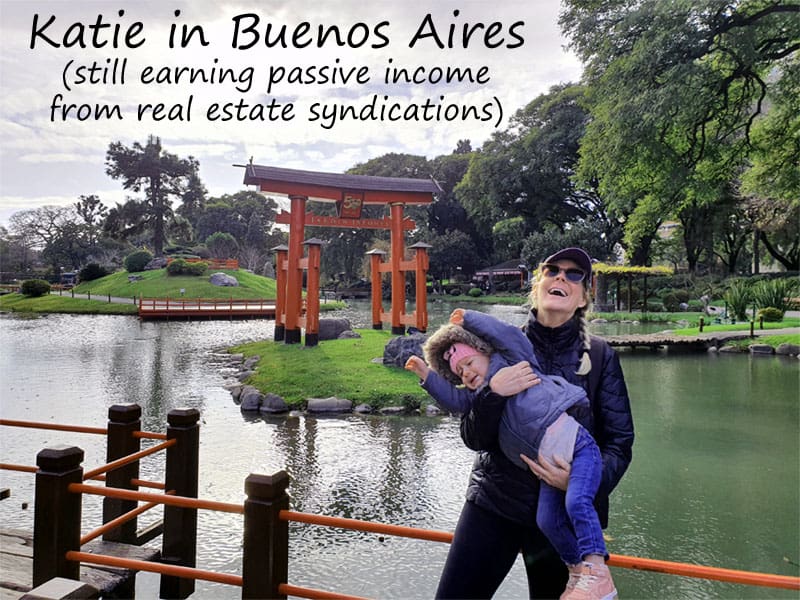The Big Picture On How To Buy And Hold Real Estate:
-
- Investing for the future focuses on building wealth and passive income over time through real estate, highlighting benefits like steady rental earnings, tax breaks, and the natural increase in property values.
- It is important to pick the right properties in the right locations to ensure good returns, taking into account the local market conditions.
- Good management practices, including maintaining properties and fostering positive relationships with tenants, are key to keeping the income flowing and protecting the investment’s value.
Disclaimer
The information provided on this website is for general informational purposes only and should not be construed as legal, financial, or investment advice.
Always consult a licensed real estate consultant and/or financial advisor about your investment decisions.
Real estate investing involves risks; past performance does not indicate future results. We make no representations or warranties about the accuracy or reliability of the information provided.
Our articles may have affiliate links. If you click on an affiliate link, the affiliate may compensate our website at no cost to you. You can view our Privacy Policy here for more information.

Looking for an investment strategy that helps you create ongoing passive income? Income streams that will keep coming in for the rest of your life?
That’s the beauty of the buy-and-hold real estate strategy: you put in the work and money once, and give yourself the gift that keeps on giving. Forever.
Here’s what you need to know if you’re new to real estate investing and long-term real estate returns, and how to make sure your real estate investments pay strong returns for decades to come.
What Is Buy-and-Hold Real Estate?
The buy-and-hold real estate strategy is, well, exactly what it sounds like. An investor buys a property, rents it out, and holds onto it for the long term – typically five years or longer.
Sounds simple, right? And it can be, although it’s not without its own challenges. More on them shortly.
A buy-and-hold real estate strategy is a straightforward way to start your real estate investing journey. As you gain experience and capital to work with, you can scale the strategy to create a series of income streams to grow your wealth over time.
Keep in mind that long-term ownership does not necessarily mean the property must be leased as a long-term rental. Owners can use the property as a vacation rental or short-term corporate rental as well, potentially for higher returns.
For a better example, here are some real estate properties that can be bought and held in the long term:
| Type of Property | Characteristics |
|---|---|
| Single-Family Homes | Suitable for beginners; easier management; attracts long-term tenants. |
| Multi-Family Properties | Higher income potential; more management-intensive; economies of scale. |
| Commercial Real Estate | Long-term leases; stable cash flow; higher upfront investment. |
| Industrial Properties | Long-term leases; less frequent tenant turnover; specific market demand. |
| Vacation Rentals | Higher rental yields; seasonal demand; more hands-on management. |
Given its simplicity and ongoing passive income, the buy-and-hold real estate strategy remains one of the most common approaches to investing in real property. But why else should investors consider buy-and-hold?
Why Buy and Hold Real Estate
Before choosing a real estate investing strategy, here’s what you need to know about buy-and-hold real estate.
Ongoing, Predictable Income from Buy-and-Hold Real Estate
One of the greatest advantages of a buy-and-hold real estate strategy is the ongoing passive income.
Most importantly, you can predict that income before buying the rental property. By analyzing the real estate cash flow and running the numbers with a rental property ROI calculator, you know exactly what kind of return you’ll receive on any given property.
That means never making a bad real estate investment, if you learn how to calculate rental cash flow properly.
While landlords’ expenses vary month to month, as a long-term average they can be predicted. Sure, you may have a vacancy periodically, or need to make the occasional repair, but by budgeting for the neighborhood’s vacancy rate, CapEx, and other irregular expense, you can budget for them accurately.
You can even reduce turnovers and expenses through tenant retention programs and thorough tenant screening.
A Relatively Passive Income Source
A buy-and-hold real estate investment provides you with a relatively passive source of income. Of course, if any of the appliances or systems break or there is any major damage to the property such as flooding or fire, you will have to fix these things.
However, if you have a reliable long-term tenant in your property the upkeep should be minor. Plus, you can always hire a property management company to delegate the work and remain completely hands-off with your investment properties.
Tax Advantages of Buy-and-Hold Real Estate Investments
Another long-term real estate return from your buy-and-hold real estate investment is the tax advantage it gives you. The IRS allows you to take tax deductions for any legitimate expense you run into while managing your rental property.
For example, you can deduct your mortgage interest payments, maintenance costs, insurance premiums (including rent default insurance), property taxes, tenant screening fees (if you pay them, rather than charging them directly to applicants), property management fees, some closing costs, and legal costs like lease agreements. You can even deduct for paper expenses like depreciation!
See our full breakdown of rental property tax deductions for more details.
And when you eventually go to sell, you’ll pay the lower capital gains tax rate, rather than your regular income tax rate, because you held the property as a long-term investment.
Retirement Income Advantages
 Your buy-and-hold real estate investment also has retirement advantages. Usually when you retire, you will have a 401(k) that you can begin withdrawing from by the time you are 59 1/2. If you withdraw any money sooner, then you will have to pay a 10% penalty fee. Once you do begin to withdraw your funds, you will also have to pay taxes on them.
Your buy-and-hold real estate investment also has retirement advantages. Usually when you retire, you will have a 401(k) that you can begin withdrawing from by the time you are 59 1/2. If you withdraw any money sooner, then you will have to pay a 10% penalty fee. Once you do begin to withdraw your funds, you will also have to pay taxes on them.
Because most people gradually sell off their stocks and bonds in retirement, their nest egg gradually declines, and it opens them up to worries like sequence risk and safe withdrawal rates like the 4% Rule. But with rental properties, you don’t need to sell off the underlying assets to earn income.
Rental properties are the golden goose: they keep generating income forever, with no need to gradually sell off your portfolio.
Buy-and-Hold Real Estate Returns Inherently Adjust for Inflation
Inflation happens. And there is nothing you can do about it.
With most investments, you have to subtract out inflation to calculate the “real” return. For example, if you buy a one-year bond paying 4%, but inflation runs at 2.5% that year, your real return is only 1.5%.
But with buy-and-hold real estate investments, you don’t have to worry about inflation eating away at your returns. Why? Because rents rise alongside inflation – or even faster than it, more often than not.
Thus, your returns inherently adjust for inflation, and continue rising year-in and year-out.
Appreciation Over Time
Another long-term return from your buy-and-hold real estate strategy is that the value of your property is going to appreciate over time. So long as you have purchased a property in a desirable area where people actually want to live, home values continue to rise.
This means that if you want to sell your investment property five, ten, or even 15 years down the road you will most likely be able to sell your property at a much higher list price than what you bought it for.
Plus, your equity rises from the other direction as well: a constantly diminishing mortgage balance. Since your tenants effectively pay your mortgage for you (and then some!) through their monthly rent, you both earn the monthly cash flow and gradually create enormous equity in your buy-and-hold properties!
Leverage
That brings up another benefit of a buy-and-hold real estate strategy: leverage.
Leverage is a fancy way of referring to the ability to finance your investments with someone else’s money. You build your own portfolio of income-producing assets, largely paid for by someone else.
In fact, you can even secure net 100% financing for your buy-and-hold properties using the BRRRR method. Just be careful not to overleverage yourself, and to make sure your properties all still cash flow well after refinancing.
(article continues below)
Risks of the Buy-and-Hold Real Estate Strategy
Of course, like any type of investing, a buy-and-hold real estate strategy has risks. Before committing money to any property purchase, make sure you understand the risks involved in rental properties and know how to mitigate them.
Rent Defaults
It’s an inherent risk for landlords: your tenant could always default on their rent.
What follows is the expensive eviction process and the very real risk of them leaving your property in terrible shape. Fortunately, it doesn’t have to come to that if you put in a little work up front.
Take steps to mitigate the risk of your tenants defaulting on their rent, such as aggressive tenant screening, buying rent default insurance, and investing in high-demand areas. By screening your tenants carefully, you can avoid 95% of rent defaults, and for the other 5%, your rent default insurance pays you the rent if you have to evict them.
Another way to ensure you aren’t stuck making a mortgage payment from your personal bank account is to build an emergency fund! This is as simple as it sounds: for your buy-and-hold real estate investment property, you set aside a portion of the rental income and hold it in your property reserve fund.
This emergency fund or reserve covers your vacancies, repairs, insurance deductibles, and other expenses that you planned for in your cash flow calculations. It also ensures you always have a reserve to make a mortgage payment from if you happen to have a tenant that defaults on their rent.
Property Damage
Another challenge landlords face is property damage.
Again, landlords can avoid this risk through prevention. Start with thorough tenant screening, including conversations with both current and former landlords. Ask how they treated the property, and the condition upon move-out.
You can also collect a higher security deposit. Reliable renters tend not to object as heavily, since they’ve always received their deposits back and have little doubt they’ll receive this one back too. Just make sure the deposit you ask for is both reasonable and legal in your state and city!
Another angle you can take to protect against property damage involves tenant-proofing the property itself. Yes, you want your buy-and-hold property to be beautiful and attractive, but “beautiful” and “delicate” aren’t the same thing; opt for resiliency whenever given the choice. For example, instead of easily-scratched hardwood floors, install luxury vinyl tile or similar synthetic wood flooring that looks great but can withstand the daily punishments your tenants will inevitably inflict.
Vacancies
It’s a fact of buy-and-hold properties: sometimes landlords fact vacancies. And, once again, landlords can minimize this risk through, you guessed it, prevention.
From the beginning, you want to ensure that you invest only in high-demand areas. You don’t need an economics degree to understand that if people want to live where your investment property is located, then you’ll have plenty of applicants to choose from when your property turns over!
While you won’t likely find great returns in the most expensive luxury neighborhoods, be especially careful to avoid areas that you don’t want your kids to be in after dark. Lower-end neighborhoods tend to have both lower demand and higher turnover rates, not to mention socio-economic challenges like crime and poor personal finance habits. Leave lower-end markets to niche investors.
Finally, make sure you include the vacancy rate when forecasting your cash flow in the rental property ROI calculator. Beyond including it in your calculations, though, make sure you actually set aside money for it every month! Build your property reserve/emergency fund to have cash to cover the mortgage when you face your next vacancy.
How To Manage Risks
While there may not be a perfect strat for managing risks in real estate, prudence and preparation go a long way. Here are some steps to mitigate risks in real estate investments:
-
- Market research is key. Always conduct thorough research when looking for areas to invest in, and include economic indicators, current neighborhood status, prices (of course), demographics, and development plans.
- Diversify your portfolio (if possible) to avoid getting wiped when a trend collapses.
- Keep a financial buffer against sudden crashes, unexpected expenses, or other emergencies.
- Do not neglect maintenance—a $50 repair now can become a thousand-buck headache a few years later if you’re not careful.
- Things aren’t always going to go your way, so it’s important to have an exit strategy.
(article continues below)
How To Finance Your Buy-and-Hold Real Estate Investment
Real estate buyers (whether first time or repeat) typically finance 85% of their purchase. There are a lot of choices out there.
So, here’s a quick list of the types of financing (creative or otherwise) that you can use to enhance your real estate portfolio:
| Financing Option | Benefits | Risks |
|---|---|---|
| Conventional Mortgage | Lower interest rates; fixed payments; widely available. | Requires good credit and stable income; down payment needed; potential PMI if <20% down. |
| FHA Loan | Low down payment; easier qualification criteria; government-backed. | Strict property standards; mortgage insurance required; primary residences only. |
| VA Loan | No down payment for qualified veterans; limited closing costs; no PMI. | Only for veterans; specific property criteria; funding fee. |
| Hard Money Loan | Fast funding; flexible terms; based more on the property than credit score. | High interest rates; short repayment terms; requires significant equity. |
| Private Money Loan | Flexible terms; potentially lower costs; based on personal relationships. | Potentially higher costs; relationship risk; less formal agreements. |
| Seller Financing | Potentially lower closing costs; flexible terms; no lending fees. | Risk of seller default; legal complexity; potential for unfavorable terms. |
| Real Estate Crowdfunding | Access to deals with smaller capital; diversified investment opportunities. | Limited control over investment; fees; risk of platform failure. |
Where to Find Your Perfect Buy-and-Hold Real Estate Investment
You’re on board to invest in a long-term rental property. But where do you actually find them?
Here are a few strategies to consider for buy-and-hold real estate investing.
Turnkey Properties
Turnkey rental properties are either in rent-ready condition, or already rented to paying tenants. That makes it easy to invest in real estate long-distance, if you don’t live in a great market for rental investing.
For ideas on where to invest, check out our list of the best cities for real estate investing in the US, based on eight different metrics.
You can find local mom-and-pop turnkey sellers in any market. We keep a directory of them, in our Dealfinder Database (not for sale – it’s part of our FIRE from Real Estate program). Alternatively, you can view turnkey property listings on Roofstock’s platform. They include a wealth of data about each property, and the market where it’s located.
Wholesale Properties
If you’re willing to put in some elbow grease and have the cash to purchase the property upfront, then a wholesaler could be the perfect option for you.
Wholesalers operate locally, finding great deals on properties and then selling the rights to those deals to investors. We include state-by-state listings for wholesalers in our Dealfinder Database as well.
For more properties privately available for sale to investors, check out Asset Column.
Keep in mind these properties usually need renovations to one degree or another!
Other Properties Requiring Renovation
Don’t mind painting, replacing flooring and fixtures, or possibly even mechanical system upgrades?
If so, you can enlist a Realtor and buy a good ol’ fashioned fixer-upper. Most of these homes will be listed at market value, as you’re competing with every other buyer on the market, but you can find a few hidden gems in the list. Especially if you learn how to negotiate real estate deals!
For the best deals – but more work on your part – you can look for properties in a specific neighborhood by driving for dollars. And with the help of modern technology, you can automate the entire process using tools like Deal Machine and PropStream (see our full PropStream review here).
Final Thoughts
From ongoing passive income to inflation-adjusted returns to predictable cash flow to leverage, buy-and-hold real estate deliver exceptional returns – to those willing to put in the work to learn how to invest and to find good deals.
It can even help you reach financial independence and retire early, if you’re looking to design your perfect life on your own terms!
Like all investments, long-term rental properties come with risks, not just rewards. But unlike many other investment risks, they can be prevented with a touch of foresight.
Build “forever income,” and keep earning indefinitely.
What are the biggest lessons you’ve learned in your own buy-and-hold investment properties? Share them below!



























I actually came across this article out of curiousity. I did not know what buy and hold properties were. I am very interested in investing money and working hard to find the best way to do this.
Glad to hear it Keith! If you’re new to real estate investing and the buy and hold strategy, I recommend taking our free course on FIRE from Real Estate. Lots of info in there!
I will definitely sign up! Thanks!!
Buy real estate in up-and-coming neighborhoods. Real estate is generally a great investment option. It can generate ongoing passive income and can be a good long-term investment if the value increases over time. Get easy finance by taking a piece of quick advice from Prestige Capital Corporation or take benefits like factoring receivables https://www.prestigecapital.com/services/factoring-services/
Buy and hold is a great investment nowadays. Rocky markets today mean better returns in the future when you hold for the long term.
Agreed Alexander!
I love buy and hold investing but with small pool of income it’s quite difficult to start. I’m looking for a lending company for beginners.
Yeah the big down payment is one of the major drawbacks of buy & hold real estate investing. Check out our Investment Property Loans page to compare lenders, and also consider starting with real estate crowdfunding. Some crowdfunding platforms let you get started with as little as $10.
I’m glad you jump in! Crowdfunding is interesting.
I don’t hear much about rural investors. I think it’s a good idea to buy and hold residential units in rural places as a retirement investment.
Some investors swear by rural properties!